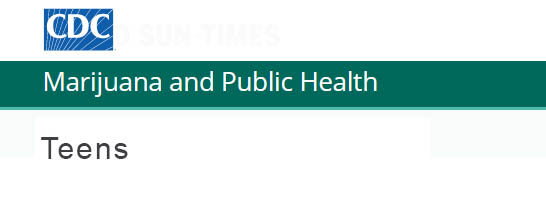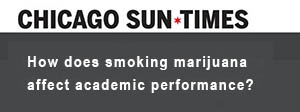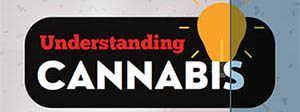Marijuana/Cannabis
Marijuana: Research, Information, Education & Prevention
Welcome to the Marijuana Information page, provided by the SAFE Office at Frostburg State University. With the legalization of cannabis in Maryland and other states, it is important to stay informed about the changing social and legal environment. This page offers valuable information on the effects of marijuana, Maryland laws, FSU policies and practices, and resources for those seeking more information or support. Our goal is to provide a comprehensive guide to help you make informed decisions about marijuana use.
Research
According to the Maryland College Survey, a significant majority of FSU students (80%) reported not using cannabis in the past month. The FSU MD-CAS 2022 Survey, conducted among Frostburg State University students, found that 26% of respondents reported using cannabis in the past year. Among those who reported using cannabis, smoking was the preferred method of consumption; with 84% of all users saying they regularly smoke, followed by edibles at 63%, and vaping at 56%. However, it is important to note that college students tend to overestimate the prevalence of alcohol and drug use on campus.
For students who choose to use marijuana, please consider the following facts:
- Impaired driving crashes have increased significantly in other states who have legalized marijuana.
- It’s illegal to take marijuana products out of the state.
- Outdoor recreational facilities have the legal right to impose fines on students who may be in violation of their business policy regarding marijuana.
- Marijuana is not cheap. The national average price of marijuana per ounce is $326.00. (District of Columbia being the most expensive)
- Maryland College Survey found a statistically significant association between using cannabis in academic contexts and lower GPA/skipping class.
- Marijuana is associated with gun violence, homicide and reckless endangerment more than any other illicit drug.

Legal Matters/Policies
At Frostburg State University, it is prohibited for anyone (regardless of age) to possess or use marijuana on campus in any form, even with a prescription. The university is required to comply with the Drug-Free Schools and Communities Act of 1989, which mandates that each institution distribute written standards of conduct to all students and employees annually. These standards must clearly prohibit the unlawful possession, use, or distribution of illicit drugs and alcohol on school property or as part of any school activities for employees (Policy) or students (Code of Conduct). Violating the FSU drug policy by being under the influence of marijuana will result in student conduct sanctions and processes. Moreover, using marijuana in any form, such as smoking, eating, or vaping, is not allowed in public places on campus. It is worth noting that smoking and vaping are also in violation of the university's smoke-free campus policy.
Substance Abuse Policy
Community Standards Policy Statements
Recreational Cannabis Use and Possession in Maryland

Academics
Published research consistently shows that the more frequently a college student uses cannabis, the lower their GPA tends to be, effecting class attendance, retention and graduation.
Prevention Initiatives at Frostburg State
Frostburg State University is committed to maintaining a safe and inclusive living, learning, and working environment for all members of our University community to enjoy. To ensure that our values of personal responsibility, diversity, and civility are promoted, the University provides a wide-array of prevention programs and trainings to our students and employees.
Cannabis: What You Should Know
In light of Maryland’s HB 837 (Legalization of Cannabis) and part of our comprehensive marijuana prevention program, Frostburg State University expects each new full-time, degree-seeking student, including full-time transfer students with 30 academic credits or fewer, regardless of their personal views or experiences with cannabis, to complete this 22 minute program offering information to help students make informed decisions about cannabis, how to know when someone’s use has become problematic, and how to help a friend who may have a problem with their cannabis use while highlighting important campus resources. Invitations and reminders will be sent to student email accounts. VectorSolutions Training (Required)
Any interested faculty or staff member also have access to previewing the online cannabis module by following the steps listed below:
- Visit student training on Cannabis
- Click on the middle course titled "Alcohol and Drug Abuse Prevention"
- From there click on the "CannabisEDU Module"
- On the right-hand menu click the forward arrow to begin the course
- You will the need to review and accept the Terms and Conditions to begin
- Lastly, click the blinking start course icon in the header to review the course in its entirety
Common characteristics of students who choose NOT to use cannabis. (Maryland Collaborative Survey, Summer 2022).
- Attend class on a regular basis
- Have high expectations for academic success
- Establish specific academic goals
- Communicate effectively and consistently with faculty members
- Serve campus/community through positive engagement and volunteerism
- Part-time employed
- Prosocial engagement with friends who are positive and don’t use cannabis
- Affiliate with positive student organizations

Health
Cannabis use can also impact your health in many ways. From short-term effects like impaired memory and concentration, to long-term risks such as addiction and lung damage, it's essential to understand the potential health consequences associated with cannabis use. It is crucial to educate yourself on the potential risks to make informed decisions about your health.
- altered senses (for example, seeing brighter colors)
- altered sense of time
- Sleep disruptions, impaired memory, and sleepiness
- changes in mood
- impaired body movement
- difficulty with thinking and problem-solving
- impaired memory
- hallucinations, delusions, & psychosis (regular use of high potency marijuana when taken in high doses)
- breathing problems
- increased heart rate
- severe nausea vomiting (long term use)
- temporary hallucinations
- temporary paranoia
- worsening symptoms in patients with schizophrenia—a severe mental disorder with symptoms such as hallucinations, paranoia, and disorganized thinking
(National Institute on Drug Abuse & American Psychological Association, 2022)

Faculty/Staff
As a faculty member, you play an important role. Students look to you for academic advising, mentoring and educating them to become productive and successful.
Unfortunately, cannabis misuse can interfere with your hard work and student learning. Having regular contact with students, positions you to become a potential life saver. Early intervention can achieve multiple goals that creates a “win-win” for faculty, students and the university.
Early Intervention Advantage
- Prevents student drug use from becoming dependent
- Improves the overall learning environment
- Supports students that maybe expressing other mental health issues
- Increase retention and graduation rates
- Sends a positive and caring message to other classmates
- Increases a student G.P.A. and class attendance
- Supports the university strategic plan goal of student well-being
Faculty Contributions
- Share your research expertise to help strengthen prevention, data, information, events, etc…
- Consider joining task forces, coalitions or committees that address drug use/misuse and/or health promotion/well-being - Frostburg Community Coalition
- Know where to refer students (SAFE Office & Student Counseling Center)
- Students typically over-estimate the amount of drug use on campus. The SAFE Office can provide faculty and staff members with current data (MD-CAS 2022) to help correct student misperceptions
- Infuse social norms data into your academic curriculum (i.e., Speeches, debates, research, case study scenarios, alcohol metabolism, laws/legal issues, writings/readings)
- Implementation of prevention efforts leads to a healthy campus culture and supports student success and well-being
Distress Signs
- Missed classes/assignments
- Failing
- Mood swings, irritable, hyperactive
- Weight loss/gain
- Heightened anxiety
- Falling asleep in class
- Lack of energy/motivation
- Disruptive/aggressive
- Changes in hygiene
- Impaired speech
- Confused thoughts
- Decreased motivation to pursue academic goals
- Lack of focus
- Blood shot eyes
- Lack of coordination
- Slow movement/walking
- Loss of interest
- Disregard for authority/policies

Parents
- Talk to your student about cannabis prior to college
- Avoid mixed messages regarding cannabis use
- Establish goals and expectations and remind them of potential consequences
- Say engaged with your student, even from a distance
- Remind them of your disapproval of cannabis
- Reward their positive choices
- Take an interest in their friends, groups/activities
- Parents are notified if your student encounters issues with cannabis
Check Out our additional Resources for FSU Parents

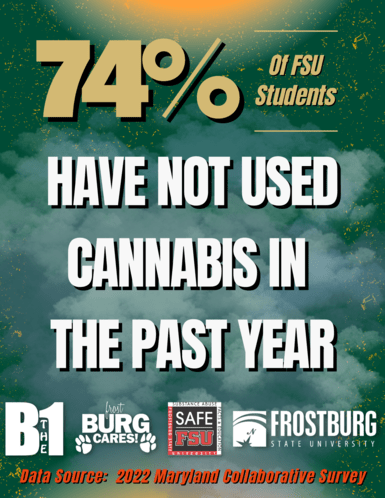

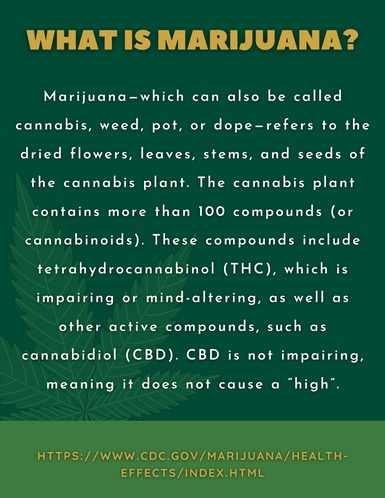
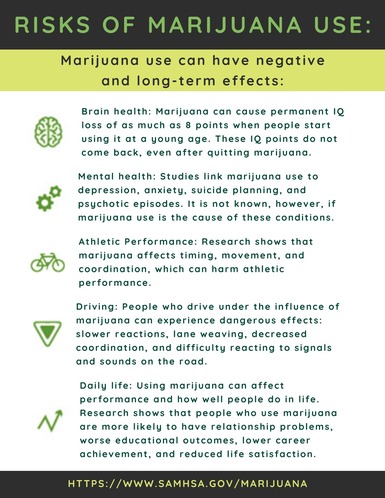
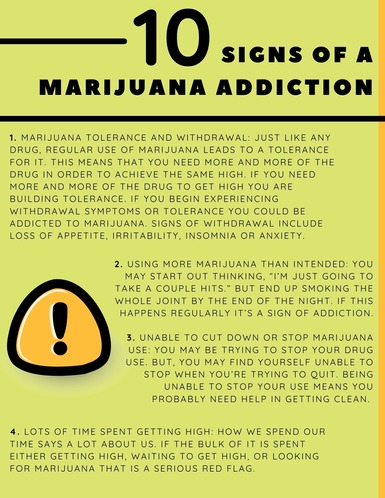
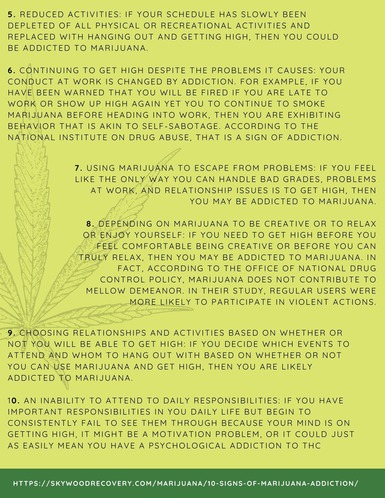
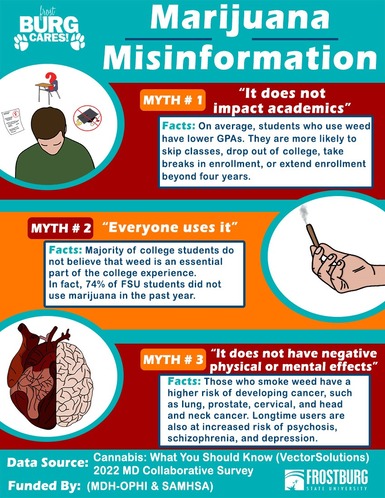
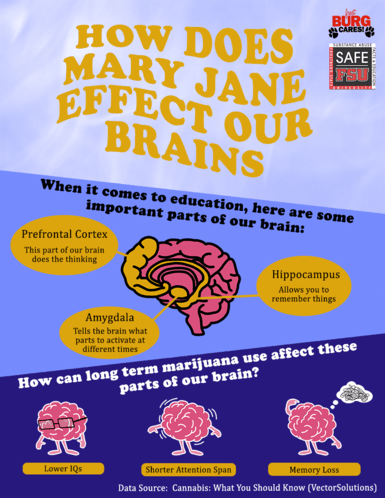
Assessment
Thanks for checking out our resource page. We consider you to be one of the most powerful partners in lowering risk factors and increasing protective factors with your students. Academic success, safety and well-being are the top priorities of our department. If you have any questions about our initiatives, check out our website or contact us. ( FSU SAFE website; Email the SAFE Office)
Resources
Frequently Asked Questions
- What is marijuana? What is cannabis?
A Cannabinoid; Marijuana refers to the dried leaves, flowers, stems, and seeds from the Cannabis sativa or Cannabis indica plant. The terms cannabis and marijuana are often used interchangeably. Extracts from the plant can be made into hash oil or wax. Cannabis products contain the mind-altering chemical delta-9-tetrahydrocannabinol (THC). They can also contain more than 400 other chemicals.
- What are slang terms for marijuana?
According to the DEA, these are the slang terms most commonly used for marijuana: Aunt Mary, BC Buds, Boom, Chronic, Dope, Gangster, Ganja, Hash, Herb, Hydro, Indo, Joint, Kif, Mary Jane, Mota, Pot, Reefer, Sinsemilla, Skunk, Smoke, Weed and Yerb.
- Is marijuana medicine?
Research shows that some chemicals in marijuana, THC as well as cannabidiol (CBD), could have medical uses. The FDA has approved some THC-based medications to treat nausea in patients undergoing chemotherapy and to help patients with AIDS gain an appetite. However, these medications are not smoked. The FDA has also approved a CBD oil-based medication to treat rare and severe forms of epilepsy. Additional clinical trials are being conducted to develop medications that contain THC and/or CBD for pain relief and seizure disorders.
- How do people use marijuana?
People who use marijuana may roll loose marijuana leaves into a cigarette (called a joint) or smoke it in a pipe or a water pipe, often referred to as a bong. Some people mix marijuana into foods (called edibles) or use it to brew a tea. Another method is to slice open a cigar and replace some or all of the tobacco with marijuana, creating what is known as a blunt. Some people are vaping—using electronic vaporizers (called e-vaporizers or vapes) that allow people to inhale vapor and not smoke. Another popular method on the rise is vaping THC-rich resins extracted from the marijuana plant, an often dangerous practice called dabbing.
- How does marijuana produce the high?
When people smoke marijuana, they feel its effects almost immediately. The psychoactive chemical THC spreads to every organ in the body, including the brain, and attaches to specific receptors on nerve cells. This affects the areas of the brain that control pleasure, memory, thinking, concentration, movement, coordination, appetite, pain, and sensory and time perception. THC is structurally similar to chemicals produced naturally by the body, called endocannabinoids, which play a role in normal brain development and function. Because of the endocannabinoid system's wide-ranging influence over many critical functions, marijuana can have multiple effects—not just on the brain, but on a person's general health. Some of these effects last only as long as marijuana is in the body while others may build up over time to cause longer-lasting problems, including addiction. Although detectable amounts of THC can remain in the body for days or even weeks after use, the noticeable effects of smoked marijuana usually last from 1 to 3 hours. If consumed in foods, the effects come on slower and can last for many hours.
- What is the Federal response to state marijuana initiatives?
In enacting the Controlled Substances Act (CSA), Congress determined that marijuana is a Schedule I controlled substance. In 2012, voters in Colorado and Washington state also passed initiatives legalizing marijuana for adults 21 and older under state law. As with state medical marijuana laws, it is important to note that Congress has determined that marijuana is a dangerous drug and that the illegal distribution and sale of marijuana is a serious crime. The Department of Justice (DOJ) is committed to enforcing the CSA consistent with these determinations. On August 29, 2013, DOJ issued guidance to Federal prosecutors concerning marijuana enforcement under the CSA. The Department’s guidance is available on the DOJ web site, and provides further detail.
- Marijuana is legal in many states. Does that mean it’s safe?
The fact that marijuana is legal in some states for medical or nonmedical adult use does not mean that it is safe. Using marijuana at any age can lead to negative health consequences: Using marijuana heavily (daily or near-daily) can damage your memory, attention, and learning ability. This can last a week or more after the last time marijuana was used. Using marijuana during pregnancy or while breastfeeding may harm the baby. Marijuana use has been linked to social anxiety, depression, suicide, and schizophrenia. Scientists don’t yet know whether marijuana use directly causes these health issues, but it may make symptoms more severe. Smoking any product, including marijuana, can damage your lungs and cardiovascular system (heart and blood vessels). Eating or drinking foods with marijuana can take longer to have an effect and may increase the chance of consuming too much. Vaping marijuana has led to lung injury and even death. Use of concentrates in vaping or dabbing devices may increase a number of health risks because of the concentration or strength of marijuana being used.
- Isn’t marijuana generally harmless?
No. Marijuana is classified as a Schedule I drug, meaning it has a high potential for abuse and no currently accepted medical use in treatment in the United States. The main active chemical in marijuana is delta-9-tetrahydrocannabinol, more commonly called THC. THC acts upon specific sites in the brain, called cannabinoid receptors, starting off a series of cellular reactions that ultimately lead to the “high” that users experience when they smoke marijuana. Some brain areas have many cannabinoid receptors; others have few or none. The highest density of cannabinoid receptors are found in parts of the brain that influence pleasure, memory, thinking, concentrating, sensory and time perception, and coordinated movement. Marijuana’s “high” can affect these functions in a variety of ways, causing distorted perceptions, impairing coordination, causing difficulty with thinking and problem solving, and creating problems with learning and memory. Research has demonstrated that among chronic heavy users these effects on memory can last at least seven days after discontinuing use of the drug. These are not the only problems connected to marijuana use. Research tells us that chronic marijuana use may increase the risk of schizophrenia in vulnerable individuals, and high doses of the drug can produce acute psychotic reactions. Researchers have also found that adolescents’ long-term use of marijuana may be linked with lower IQ (as much as an 8 point drop) later in life. We also know that marijuana affects heart and respiratory functions. In fact, one study found that marijuana users have a nearly five-fold increase in the risk of heart attack in the first hour after smoking the drug. A study of 452 marijuana smokers (but who did not smoke tobacco) and 450 non-smokers (of either marijuana or tobacco) found that people who smoke marijuana frequently but do not smoke tobacco have more health problems, including respiratory illnesses, than nonsmokers. All that stated, a recent study published in the Journal of the American Medical Association (JAMA) found that low levels of marijuana use (with no tobacco use) produced no detrimental effect in lung function among study participants. In fact, exposure led to a mild, but not clinically significant, beneficial effect—albeit among those who smoked only one joint per day. While these findings have received wide attention from the media and from advocates of marijuana legalization, it is important to consider them in the context of the extensive body of research indicating that smoking marijuana is harmful to health. Additionally, while the study did not include a sufficient number of heavy users of marijuana to confirm a detrimental effect of such use on pulmonary function, the findings suggest this possibility. The harms of marijuana use can also manifest in users’ quality of life. In one study, heavy marijuana users reported that the drug impaired several important measures of health and quality of life, including physical and mental health, cognitive abilities, social life, and career status. Marijuana is the most commonly used illicit drug in the United States. In 2011 alone, more than 18 million Americans age 12 and older reported using the drug within the past month. Approximately 4.2 million people met the diagnostic criteria for abuse of or dependence on this drug. This is more than pain relievers, cocaine, tranquilizers, hallucinogens, and heroin combined. There are very real consequences associated with marijuana use. In 2010, marijuana was involved in more than 461,000 emergency department visits nationwide. This is nearly 39 percent of all emergency department visits involving illicit drugs, and highlights the very real dangers than can accompany use of the drug. And in 2011, approximately 872,000 Americans 12 or older reported receiving treatment for marijuana use, more than any other illicit drug. Despite some viewpoints that marijuana is harmless, these figures present a sobering picture of this drug’s very real and serious harms. Marijuana places a significant strain on our health care system, and poses considerable danger to the health and safety of the users themselves, their families, and our communities. Marijuana presents a major challenge for health care providers, public safety professionals, and leaders in communities and all levels of government seeking to reduce the drug use and its consequences throughout the country.
- What effects does marijuana have on the body?
The effects are: • Increased heart rate • Lung damage • Linkage to cancer (head, neck and testicular) • Impaired immune system • Interference or change in effectiveness of prescribed medications.
- What determines how marijuana affects an individual?
Like any other drug, marijuana's effects on a person depends on many factors, including the person's previous experience with the drug or other drugs, biology (e.g., genes), how the drug is taken, and the drug's potency (its strength).
- Why is modern cannabis so much more potent than what was smoked in the 1970's?
Working in basements and greenhouses, clandestine marijuana growers have for decades before legalization been crossbreeding and selecting the highest-potency plants from their “crops” to create higher and higher potency pot. And recreational users who like the intense euphoria of high-potency pot have been eager buyers. But there are other reasons. In the 1970's, a lot of marijuana contained stems, seeds and leaves along with THC-rich flower buds; today, it's mostly flower buds. A lot of 1970's pot was grown in Colombia and shipped to the U.S.; now, it's mostly homegrown and so is fresher and more potent, too.
- Without standardized labeling and manufacture, how do you figure out dosage?
Products sold at a dispensary do tell you how much THC, and often how much CBD, is inside. Follow the standard advice to “start low, go slow” and begin with 2.5 milligrams of THC or less per dosage, experts recommend. Then do a little math to figure out how much of your chosen product delivers just that amount. It could be a half or a quarter of an edible, a tiny drop of tincture or a few puffs on a vape pen.
- I keep hearing about Indica versus Sativa cannabis: What do I need to know?
These days, not much. Historically in cannabis culture, indica referred to a type or strain of cannabis plant that in the past was known for its calming and relaxing effects. Consumers are often told that indica has shorter, broader leaves than its close relative sativa, and that it's low in THC and high in CBD. Sativa, by contrast, was known for its energizing effect. In the scientific community today, however, that distinction between indica and sativa has largely disappeared: Most cannabis products available for purchase are plant hybrids with a biochemical content that cannot be determined by appearance.
- How important is marijuana potency?
Potency—the amount of THC contained in the marijuana—has been increasing steadily in the past few decades as marijuana farmers respond to market demand. These findings are based on analyses of marijuana samples seized by law enforcement.
- Does using marijuana lead to other drug use?
The majority of people who use marijuana do not go on to use other "harder" substances, like cocaine or heroin. However, some research shows that people often try marijuana before trying other substances. We also know from animal studies that rats given repeated doses of THC show heightened behavioral responses and altered brain activation not only when further exposed to THC, but also when exposed to other drugs such as morphine. Researchers are now looking at the possibility that exposure to marijuana as a teen can cause changes in the brain that make a person more likely to get addicted to marijuana or other drugs, such as alcohol, opioid's, or cocaine. It is important to point out, however, that research has not fully explained any of these observations, which are complex and likely to involve a combination of biological, social, and psychological factors.
- How do I know if I am addicted to marijuana?
The signs that someone might have marijuana use disorder are: Using more marijuana than intended Trying but failing to quit using marijuana Spending a lot of time using marijuana Craving marijuana Using marijuana even when it causes problems at home, school, or work Continuing to use marijuana despite social or relationship problems Giving up important activities with friends and family in favor of using marijuana Using marijuana in high-risk situations, such as driving a car Continuing to use marijuana despite physical or psychological problems Needing to use more marijuana to get the same high Experiencing symptoms when stopping marijuana use People with marijuana use disorder, compared to those who use marijuana but do not have marijuana use disorder, are at a greater risk for negative consequences, such as problems with attention, memory, and learning.
- Are there treatments for people addicted to marijuana?
Behavioral therapies are available and are similar to those used for treating other drug or alcohol addictions. These include motivational enhancement therapies to develop people's own motivation to stay in treatment; cognitive behavioral therapies to teach strategies for avoiding drug use and its triggers (and for effectively managing stress); and motivational incentives, which provide vouchers or small cash rewards for showing up for treatment and staying drug free. There are currently no medications approved by the U.S. Food and Drug Administration (FDA) for treating marijuana addiction, although promising research is under way to find medications to treat withdrawal symptoms and ease craving and other effects of marijuana.
- What are the effects of mixing marijuana with alcohol, tobacco, or prescription drugs?
Using alcohol and marijuana at the same time is likely to result in greater impairment than when using either one alone. Greater impairment can result in greater risk of physical harm. Using marijuana and tobacco at the same time may also lead to increased exposure to harmful chemicals that could cause greater risks to the lungs and the cardiovascular system (heart and blood vessels). Also, marijuana may change how prescription drugs work. Always talk with your doctor about any medications you are taking or thinking about taking and the possible side effects when mixed with other things, such as marijuana.
- What smoking marijuana cause lung cancer?
Studies have not found an increased risk of lung cancer in marijuana smokers compared with nonsmokers. However, marijuana smoke does irritate the lungs and increases the likelihood of other lung and breathing problems.12,13 Moreover, many people who smoke marijuana also smoke cigarettes, which do cause cancer, and research suggests that quitting tobacco can be harder if the person uses marijuana.
- Can marijuana produce withdrawal symptoms when someone quits?
Yes. Many people who use the drug long-term and then stop have symptoms that are similar to those of nicotine withdrawal—irritability, sleep problems, anxiety, decreased appetite and various forms of physical discomfort—which may prompt relapse (a return to drug use). Withdrawal symptoms are generally mild and peak a few days after use has stopped. They gradually disappear within about 2 weeks.14,15 While these symptoms do not pose an immediate threat to health, they can make it hard for someone to stop using the drug. Because withdrawal is not as obvious or as painful as withdrawal symptoms from some other drugs such as opioid's, many people do not realize that stopping marijuana use can cause withdrawal symptoms.
- What impact does marijuana cultivation have on the environment?
Outdoor marijuana cultivation creates a host of negative environmental effects. These grow sites affect wildlife, vegetation, water, soil, and other natural resources through the use of chemicals, fertilizers, terracing, and poaching. Marijuana cultivation results in the chemical contamination and alteration of watersheds; diversion of natural water courses; elimination of native vegetation; wildfire hazards; poaching of wildlife; and disposal of garbage, non-biodegradable materials, and human waste. Marijuana growers apply insecticides directly to plants to protect them from insect damage. Chemical repellents and poisons are applied at the base of the marijuana plants and around the perimeter of the grow site to ward off or kill rats, deer, and other animals that could cause crop damage. Toxic chemicals are applied to irrigation hoses to prevent damage by rodents. According to the National Park Service, “degradation to the landscape includes tree and vegetation clearing, use of various chemicals and fertilizers that pollute the land and contribute to food chain contamination, and construction of ditches and crude dams to divert streams and other water sources with irrigation equipment.” Outdoor marijuana grow site workers can also create serious wildfire hazards by clearing land for planting (which results in piles of dried vegetation) and by using campfires for cooking, heat, and sterilizing water. In August 2009, growers destroyed more than 89,000 acres in the Los Padres National Forest in Southern California. The massive La Brea wildfire began in the Los Padres National Forest within the San Rafael Wilderness area in Santa Barbara County, California, and subsequently spread to surrounding county and private lands. According to United States Forest Service (USFS) reporting, the source of the fire was an illegal cooking fire at an extensive, recurring Drug Trafficking Organization-operated outdoor grow site where more than 20,000 marijuana plants were under cultivation. According to the USFS, suppression and resource damage costs of the La Brea wildfire totaled nearly $35 million. In addition to the environmental damage, the cost to rehabilitate the land damaged by illicit marijuana grows is prohibitive, creating an additional burden to public and tribal land agency budgets. According to internal Park Service estimates, full cleanup and restoration costs range from $14,900 to $17,700 per acre.* Total costs include removal and disposal of hazardous waste (pesticides, fuels, fertilizers, batteries) and removal of camp facilities, irrigation hoses, and garbage. Full restoration includes re-contouring plant terraces, large tent pads, and cisterns/wells and re-vegetating clear-cut landscapes. The United States has an abundance of public lands set aside by Congress for conservation, recreational use, and enjoyment of the citizens of this country and visitors from around the globe. Unfortunately, criminal organizations are exploiting some of these public and tribal lands as grow sites for marijuana. During calendar year 2010, nearly 10 million plants were removed from nearly 24,000 illegal outdoor grow sites nationwide. These numbers provide insight into the size and scale of the negative environmental impact that marijuana cultivation can have on our Nation’s public lands. *Source: Marijuana Site Reclamation and Restoration Cost Analysis.” U.S. Department of Interior, National Park Service.
















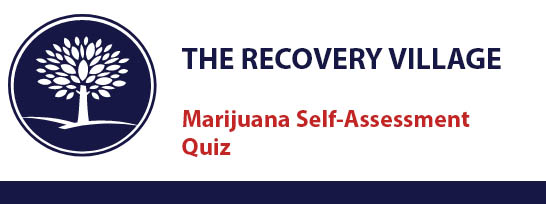

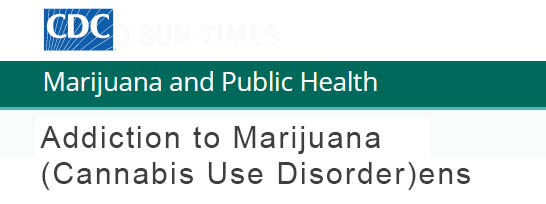 Addiction to Marijuana (Cannabis Use Disorder)
Addiction to Marijuana (Cannabis Use Disorder)